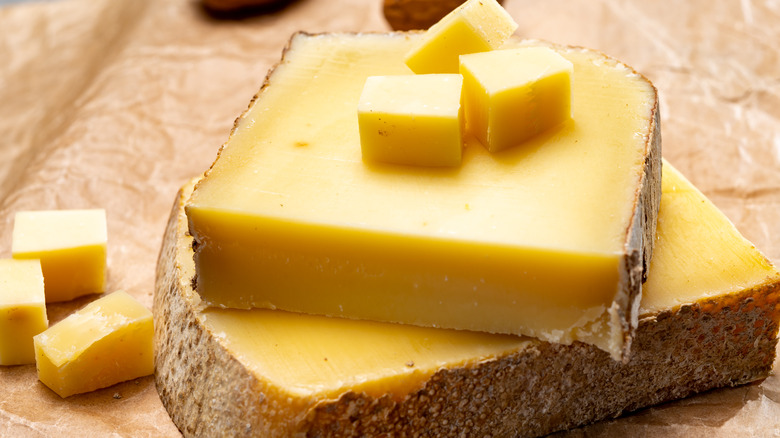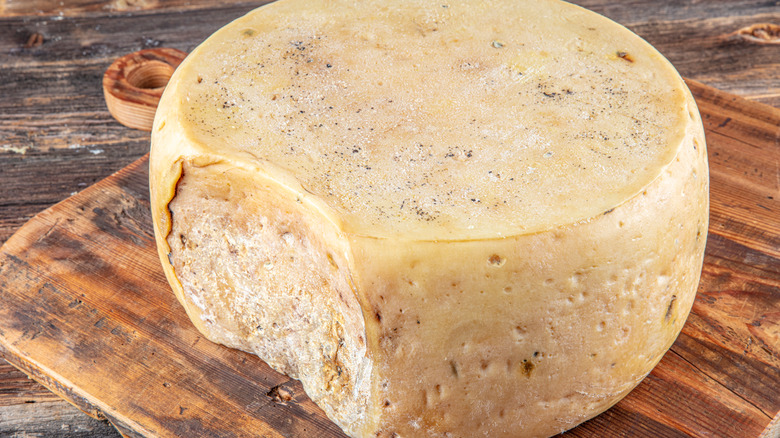The Ideal Substitutions For Comté Cheese
Comté is an unpasteurized French cheese that is made in the Jura Mountains, a mountain range that lines the border between France and Switzerland. According to Comté USA, hazelnut is one of Comté's primary flavors, but other flavors can be detected depending on the age of the cheese. For example, older Comté has powerful hints of butter, bread, and citrus, while younger Comté contains more gentle notes of caramel and milk.
Comté is a pretty versatile cheese, so you can enjoy it in a variety of ways. Some of the simplest ways to enjoy the rich, nutty flavor of this cheese include incorporating it into a cheeseboard or pairing it with crackers, per The Detroit News. However, Comté also tastes delicious when cooked. You can use it in dishes like macaroni and cheese, quiches, and omelets.
Though Comté is delicious and versatile, you may not always want to use it. So, what are some ideal substitutions for this cheese?
Ideal substitutes are Gruyère, Fontina, and Emmental
The substitute you use for Comté depends on whether you're looking for a cheese that resembles or differs from Comté. If you want something similar to this cheese, one of the best options is Gruyère, per Castello Cheese. Like Comté, Gruyère is a "mountain cheese," meaning that it is produced in the Alps along the French-Swiss border (via MasterClass), and it also has the same nutty flavor as Comté. Similarly, Fontina, an Italian cheese, also resembles Comté in flavor and works well in cooked foods. So, if you don't have Comté cheese and want something with a reminiscent flavor, Gruyère or Fontina are great substitutions.
Conversely, if you aren't especially fond of Comté or just want something a little different, try Emmental. According to Discover Switzerland, Emmental is Swiss cheese with holes, which is what most people normally picture when they think of Swiss cheese. Emmental has a sweet flavor, making it a little different from Comté.
How to maximize Comté
To enjoy Comté for as long as possible, you should be aware of some guidelines about buying and storing this cheese. According to Comté USA, before you even purchase Comté, you should examine it to ensure it's good. Good Comté cheese will have a dull color that transitions from an ivory to a pale yellow. If the Comté boasts a gray hue or appears moist, steer clear of it, as this signals that it's rancid. When you bring Comté home, remove it from its plastic wrap and rewrap it in parchment paper to extend its life. After rewrapping the cheese, be sure to refrigerate it, as leaving it unrefrigerated will result in rancidity.
When cutting Comté, it's best that you only cut what you need at the time, per the French Cheese Club. Unwrapping and cutting the rest of the cheese when it's not needed may result in it becoming dry. If you follow these guidelines, you should be able to enjoy Comté to its fullest potential.


